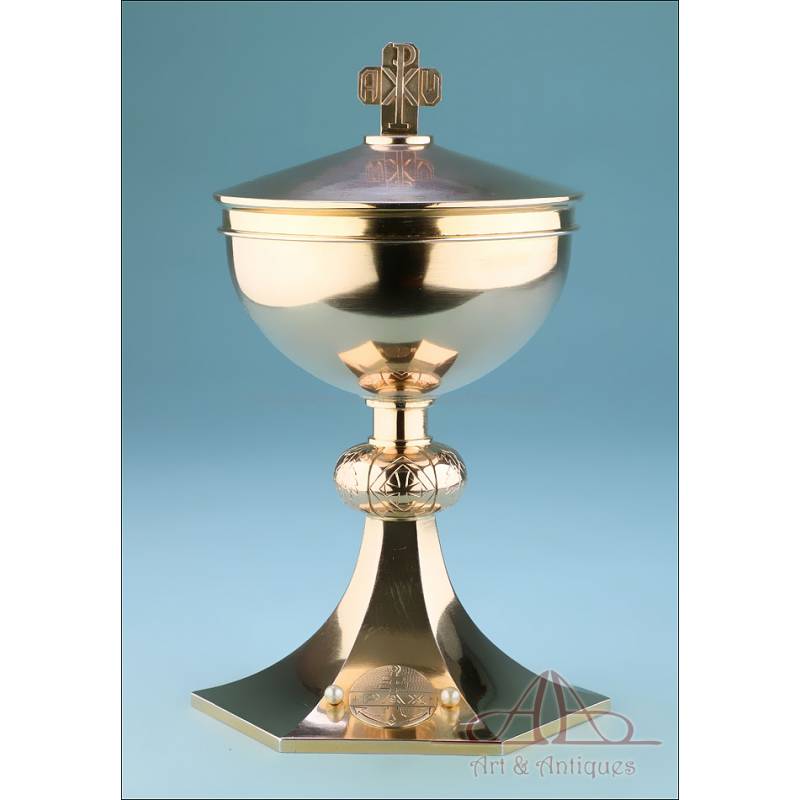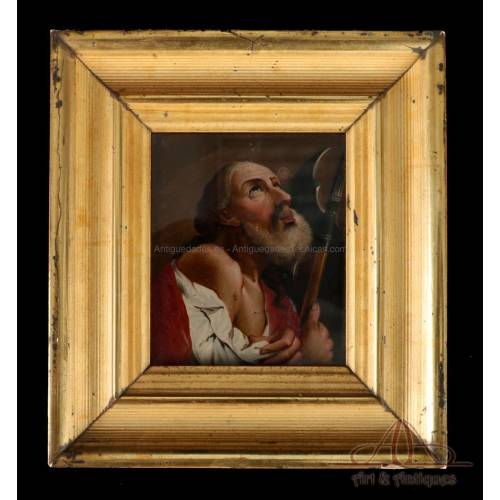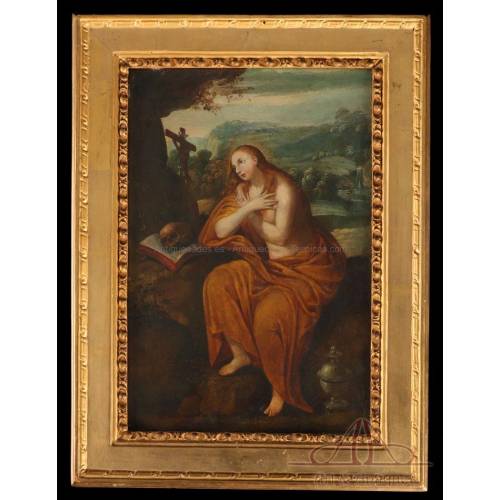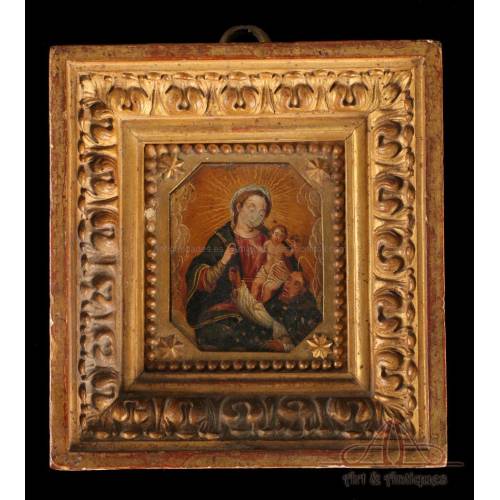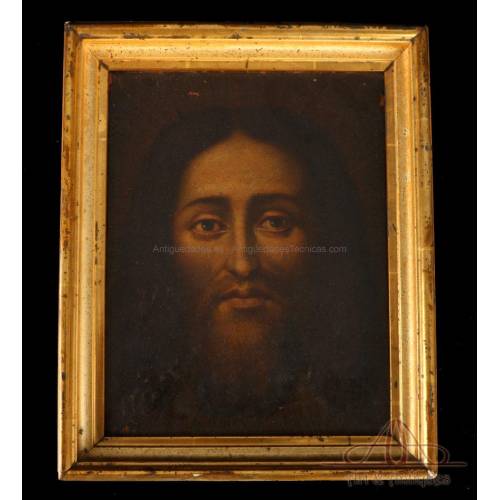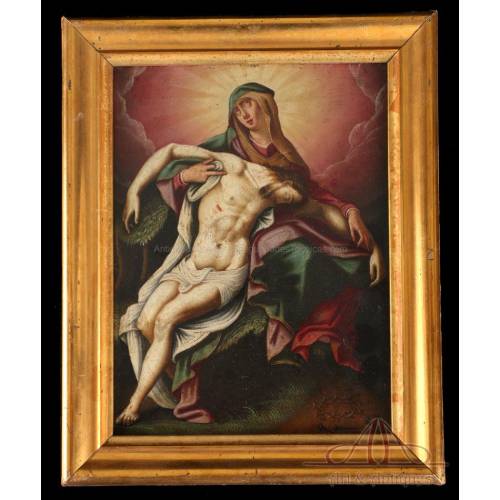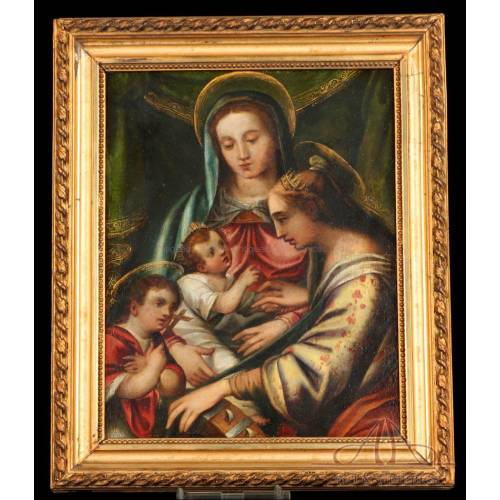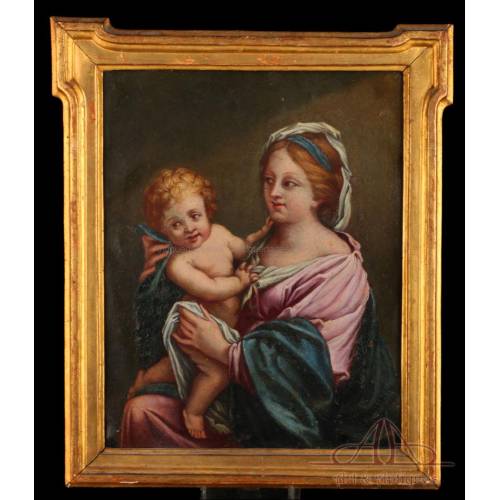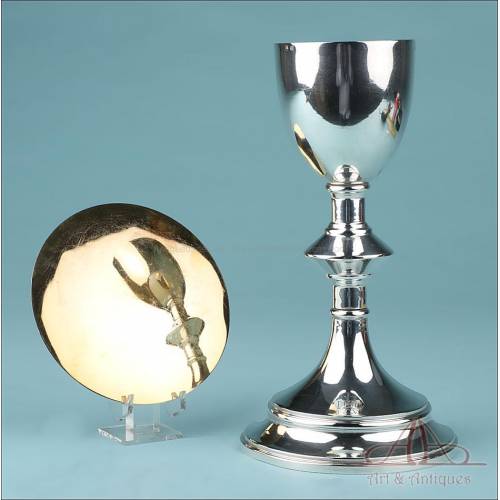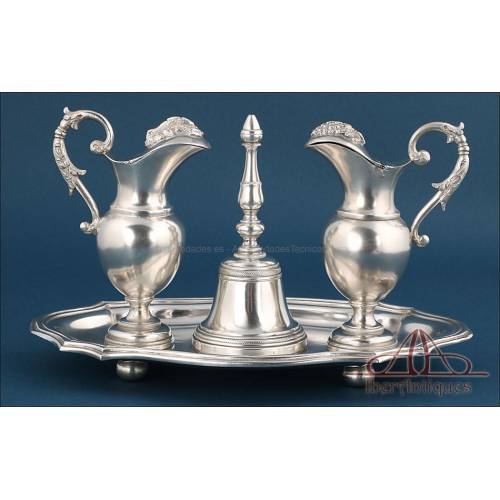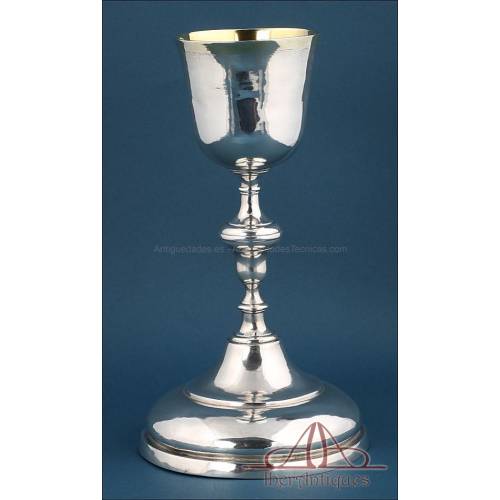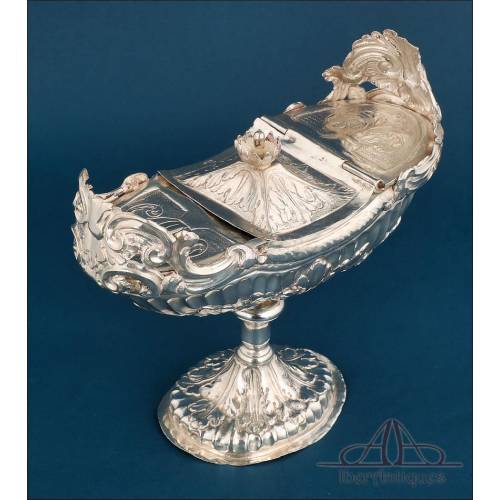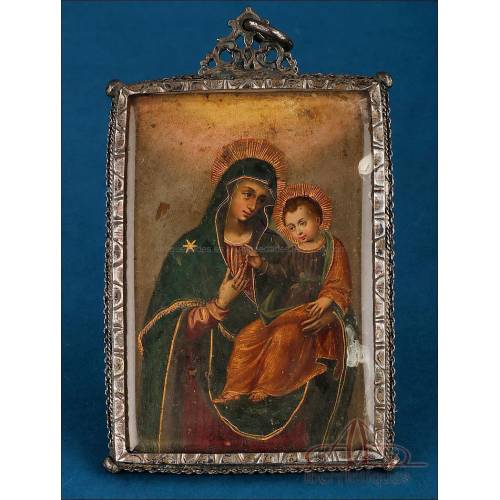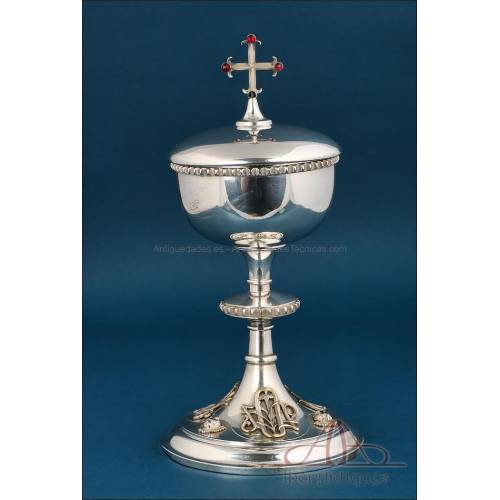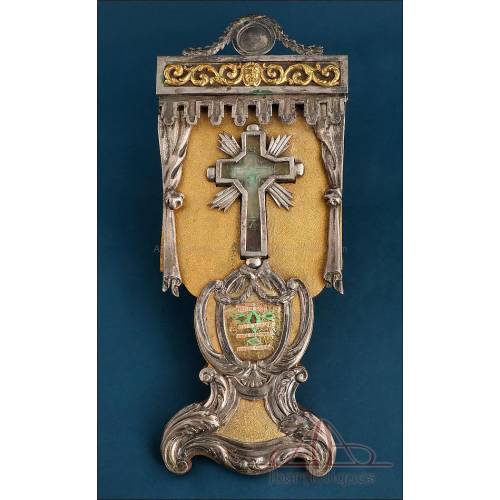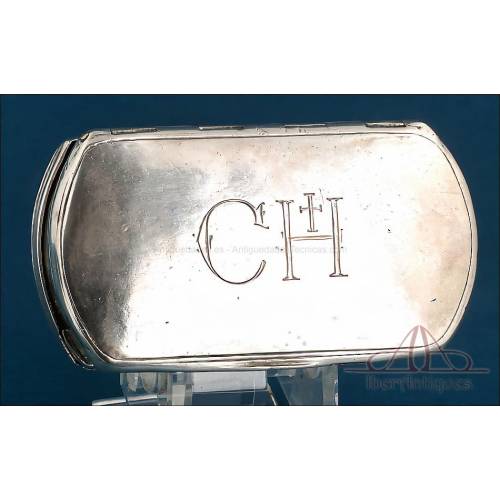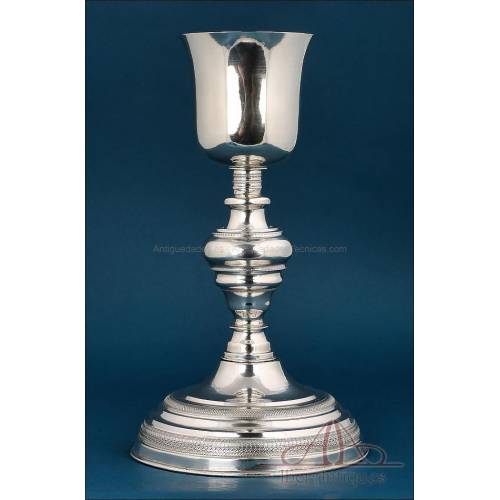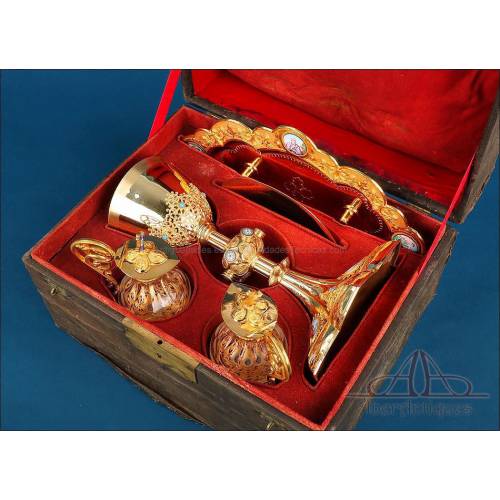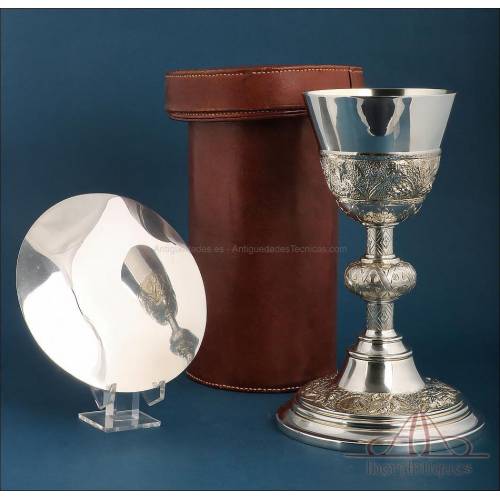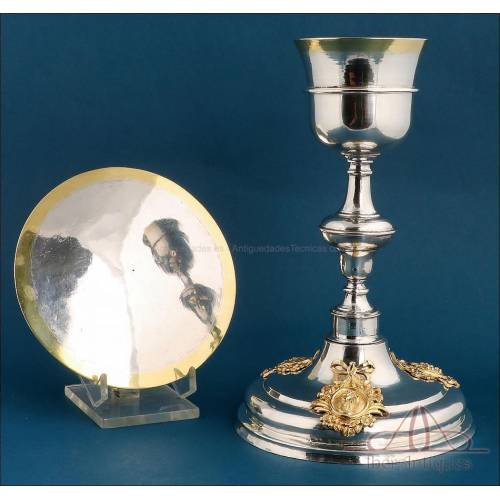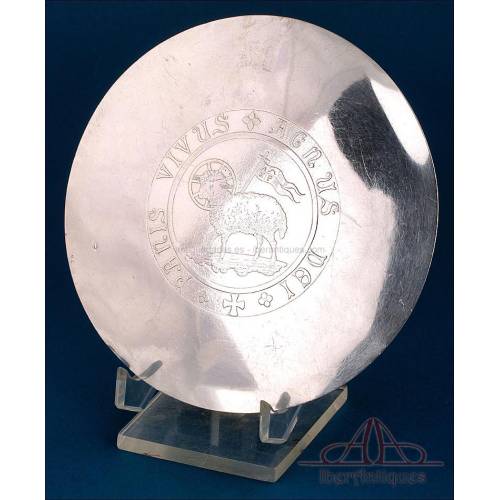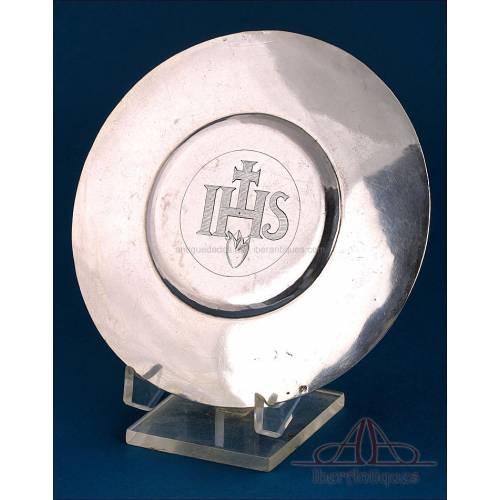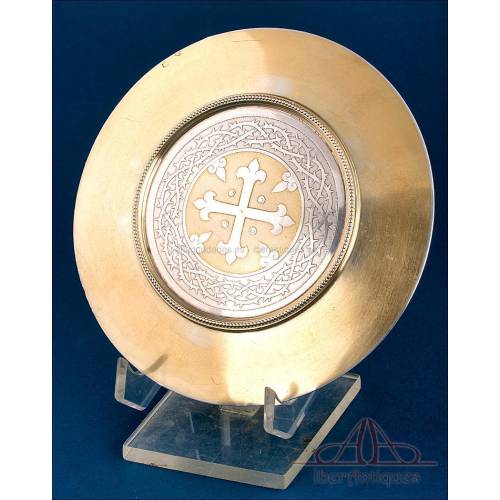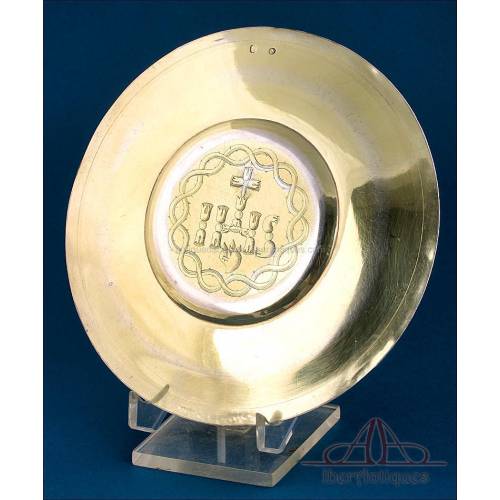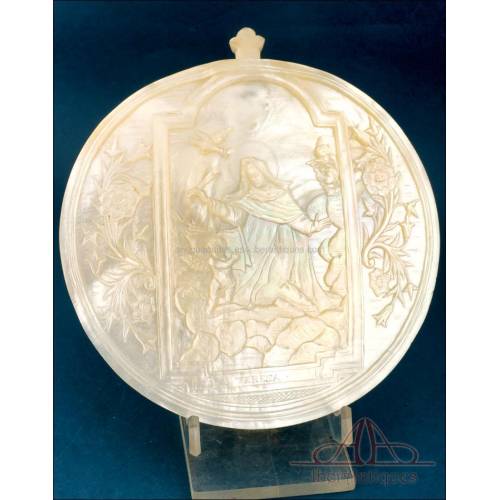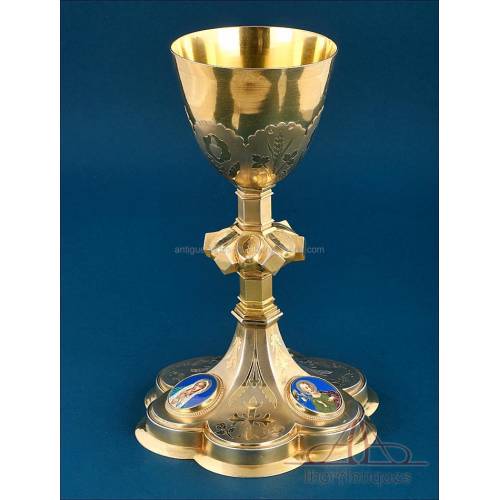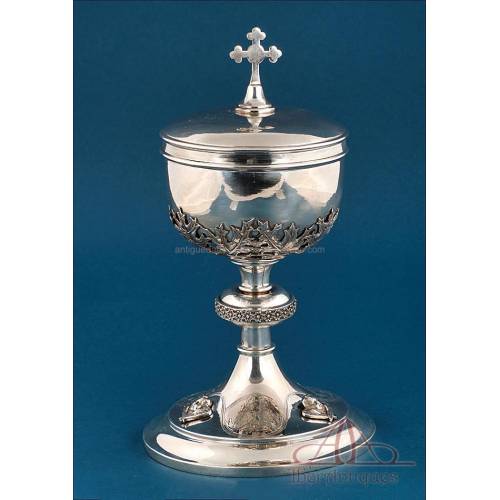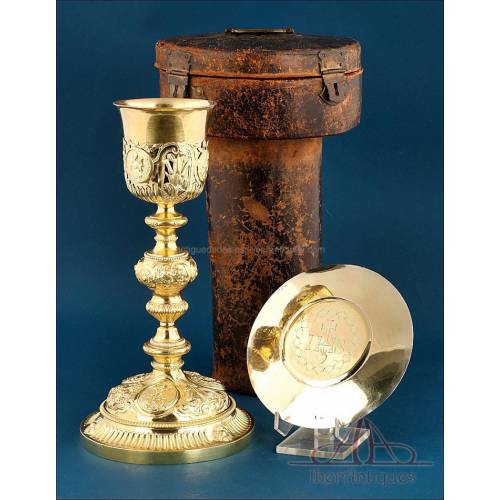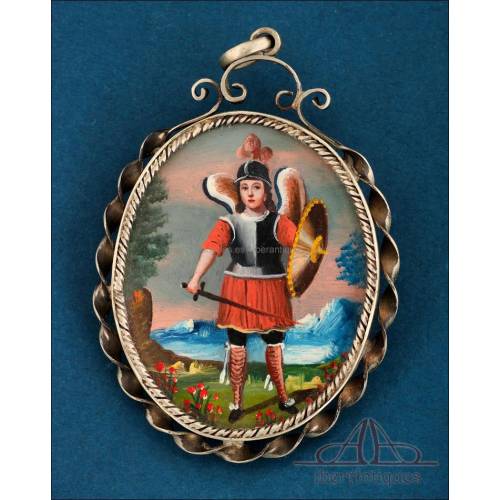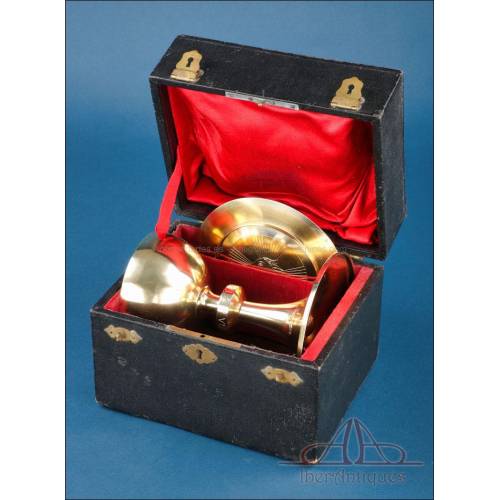D-608
Antique 100% Solid-Silver Ciborium with Pearls. France, Circa 1925
Sober antique solid-silver ciborium adorned with embedded pearls. Modern design. In fine condition.
Antique 100% Solid-Silver Ciborium with Pearls. France, Circa 1925
This magnificent antique ciborium, crafted in France around 1925, is a unique piece of religious silverwork that combines sobriety, modernity, and liturgical symbolism. Made of solid 100% silver, its clean and structured design clearly reflects the artistic lines that defined the first half of the twentieth century. It is a work that stands out for its visual balance and the purity of its forms, making it a representative example of the modern French ecclesiastical style.
The base of this piece is wide and hexagonal, with smooth surfaces that contrast with the beautiful decorative detail on the front, a circular silver applique with a granulated texture engraved with an anchored cross under the word PAX, symbol of the peace of Christ. On each side of the applique, two natural pearls in excellent condition complete the frontal decoration. From this solid base rises an elegant central node, spherical and hand engraved with delicate motifs of crosses and leaves, whose presence brings verticality and solemnity to the piece.
The use of hallmarks and punches was regulated from the nineteenth century by French legislation, which required the Minerva head mark on pieces of silver above 800‰ purity. This regulation guarantees the authenticity of worship objects and facilitates their identification by collectors and institutions. This ciborium bears well-defined old French hallmarks on different parts, base, cup, and lid, including the classic Minerva head punch certifying its solid silver, and the silversmith's mark with the initials PN, all clearly legible on the metal.
The cup, of great capacity, maintains the austere design of the ensemble, completely smooth and of perfect shape. The silver lid closes precisely and is topped with a cross that serves as a handle. This cross, also in silver, is decorated with the Chi-Rho in relief, a symbol of Christ, and flanked by the Greek letters Α, Alpha, and Ω, Omega, representing the beginning and the end. A classic symbol, interpreted here with a restrained and sober aesthetic, fully in tune with the liturgical spirit of the period.
The interwar period, between 1918 and 1939, was characterized by a more austere and functional style in the production of sacred objects, partly in response to the social and economic changes of the time. Ciboria from this period, like the one presented here, tend to avoid excessive ornamentation and display refined lines, well-defined geometric shapes, and sober symbols. These pieces were not only used strictly for liturgical purposes, they were also often gifted to newly ordained young priests, which has allowed many of them to survive in good condition, carefully preserved in sacristies or private collections.
As for the state of preservation, it should be noted that it presents some visible scratches on one side, shown in the images, but these do not affect its stability or functionality at all and add an authentic nuance to the historical character of the piece.
Ciboria are sacred vessels intended to hold the consecrated hosts during the celebration of the Eucharist. From the Middle Ages to the twentieth century, their evolution followed the artistic movements of each era, adapting both in style and materials used. France, renowned for its refined religious silversmithing, was especially prolific in producing these objects during the nineteenth and twentieth centuries. At that time, many liturgical silversmiths worked exclusively for churches and convents, creating ciboria in solid silver, often decorated with enamels, pearls, or symbolic motifs.
With nearly a century of history, this antique solid silver ciborium represents an excellent opportunity for discerning collectors and for parishes seeking to reintroduce high-quality liturgical objects into their celebrations. It would be perfect for reintegration into the Church, for use in a parish setting. It is also a piece worthy of being part of a twentieth-century sacred art collection for its aesthetics, material, and authenticity.
A piece with soul, ready to continue being part of the Eucharistic Mystery.
Dimensions: 15 x 12.5 x 24 cm (5.91 x 4.92 x 9.45 in)
Weight: 662 g

